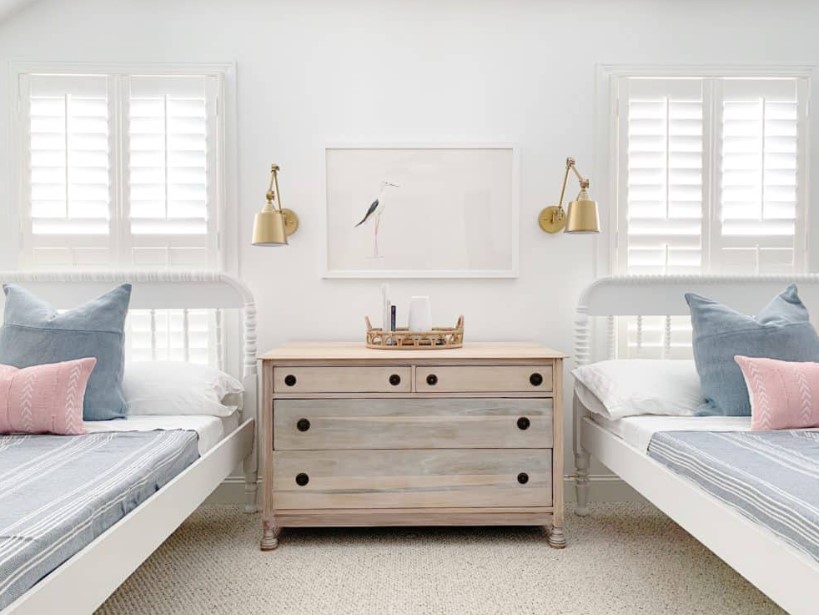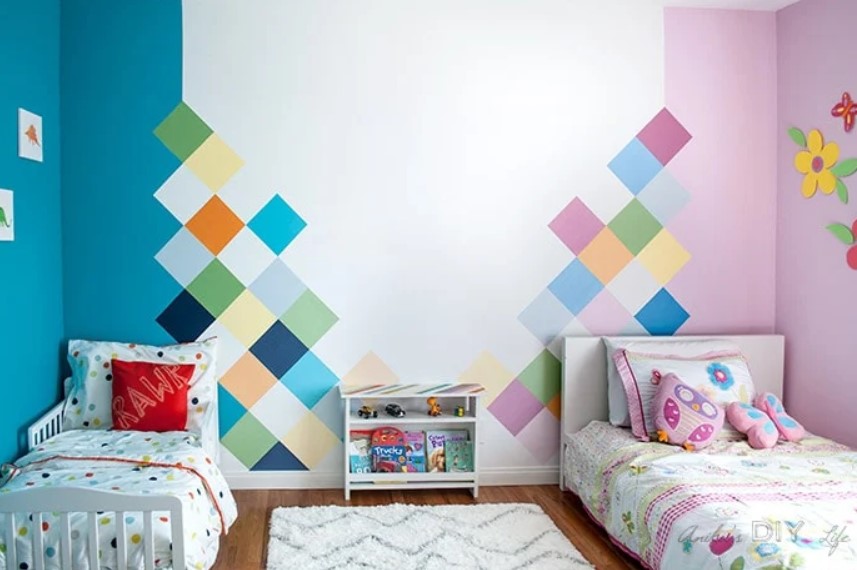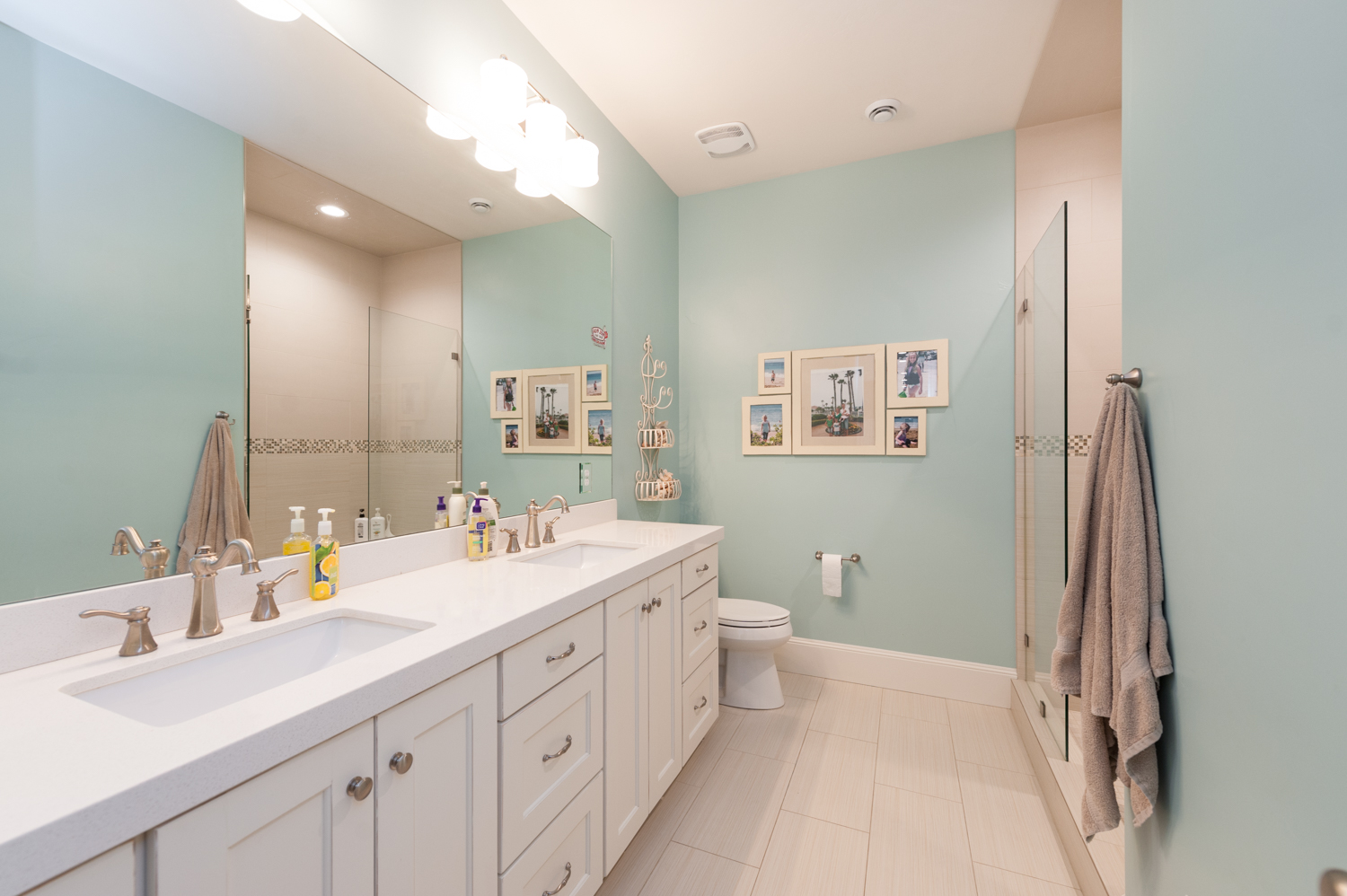Contents
Creating a shared bedroom for a boy and a girl can be both exciting and challenging. Balancing individual tastes, ensuring privacy, and maximizing space requires thoughtful design. But with the right approach, a shared room can foster a closer sibling bond and become a comfortable, personalized haven for both kids.
In this article, we’ll explore creative solutions for setting up a Shared Bedroom Ideas for Boys and Girls, from layouts and storage ideas to color schemes and privacy tips. Whether you’re working with a large room or a small space, these practical ideas can help you create a functional and beautiful room that both siblings will love.
1. Plan the Layout: Define Separate Zones
One of the first steps in designing a shared bedroom is to create a layout that gives each child their own space while maintaining a unified look. Dividing the room into “zones” for each child can help achieve this balance. Consider placing the beds on opposite sides of the room to create a sense of individuality. If space allows, try adding small rugs by each bed or unique wall decor to designate each sibling’s area.
Room divider ideas such as bookshelves, curtains, or sliding screens can provide a bit of privacy, helping siblings feel like they have their own personal space. This is particularly helpful if your children are of different ages, as it allows each one to have some alone time when needed.
2. Choose Gender-Neutral Color Schemes
Selecting a gender-neutral color scheme is a great way to create a cohesive look that both children can enjoy. Soft pastels, greys, whites, and muted tones work well as a base color. These shades not only keep the room looking unified but also make it easier to add individual touches with accent colors and accessories.
For example, you can paint one wall in a fun accent color for each child’s side of the room or incorporate colored decor items like pillows, lamps, or wall art. Opting for gender-neutral color schemes is a practical way to create harmony, especially if your children have different preferences.
3. Go for Space-Saving Furniture
When it comes to shared bedrooms, space-saving furniture is essential. Bunk beds are a popular choice for shared rooms as they maximize floor space and provide more room for play and storage. If your children are not fans of bunk beds, consider placing two twin beds with storage drawers underneath, offering each child their own space while still keeping the room uncluttered.
Other space-saving ideas include multi-functional furniture like beds with built-in storage or desks that can be folded away. Storage solutions for small shared bedrooms are crucial for maintaining an organized look, especially in smaller spaces.
4. Personalize with Bedding and Accessories
Even if the room has a unified theme, adding personalized elements for each child can make the space feel unique. Choose matching bedding sets in complementary colors, or allow each child to pick their own bedding within a similar style. This way, each side of the room reflects their personality without clashing.
Accessories like throw pillows, posters, or small bedside lamps can also help each child add a personal touch to their side. Personalized decor can help make the room feel welcoming and special, even in a shared space.
5. Create Storage Zones for Toys, Clothes, and Books
Organizing a shared room requires effective storage solutions that cater to each child’s belongings. Toy storage ideas like labeled bins, under-bed storage, and wall-mounted shelves are great for keeping the room tidy and helping each child have their own designated space for their things.
If closet space is limited, consider adding individual clothing racks or dressers for each sibling. Closet organizers can also be helpful in separating their clothes. Encourage each child to use their own storage spaces, which will teach them to take responsibility for their belongings and keep the room neat.

6. Add Privacy Elements Where Needed
Privacy can be a concern in shared rooms, especially for children of different ages or personalities. Simple room dividers, curtains, or strategically placed furniture can help create a sense of separation without dividing the room completely. Room divider ideas for siblings include placing a tall bookshelf between the beds, hanging a curtain that can be drawn when needed, or using a decorative folding screen.
These options offer privacy when desired and can be opened up to keep the room feeling spacious and cohesive. Adding small touches like a reading nook or a study corner can also provide each child with a little more independence in their shared space.
7. Incorporate Fun Themes that Appeal to Both Kids
Choosing a room theme can help create a fun and inviting space that feels intentional. When picking a theme, aim for one that appeals to both children. Nature themes, like a woodland or jungle decor, can create a calming, playful atmosphere. Alternatively, you could go for a minimalist theme with neutral colors and simple decor.
Themes can be brought to life with wall decals, themed bedding, or decorative accents. Just make sure the theme remains flexible, so as the kids grow and their tastes evolve, you can easily update the room without a complete overhaul.
8. Optimize Lighting and Accessories for Comfort
Good lighting can make a shared bedroom feel warm and inviting. Consider adding individual nightlights or reading lamps for each child’s bed. This is particularly useful if one child wants to read while the other is sleeping. Wall-mounted lights save space and provide functional lighting for each child.
Beyond lighting, add some fun accessories like wall decals, artwork, or personal bulletin boards. These small touches can go a long way in making a shared space feel cozy and customized for both siblings.
9. Encourage a Sense of Ownership and Responsibility
A shared room is an opportunity to teach kids about compromise, respect, and responsibility. Encourage each child to keep their side of the room tidy and organized. This can be easier to achieve by giving each child their own storage space and encouraging them to decorate their side of the room with items that reflect their personality.
Involving your children in the design process can also help them feel more invested in maintaining the space. Let them choose their bedding, colors, or decor elements. This way, they feel like the room truly belongs to both of them.
Frequently Asked Questions
How can I create privacy in a Shared Bedroom Ideas for Boys and Girls?
Using room dividers like bookshelves, curtains, or folding screens can create a sense of privacy. Furniture arrangements and distinct zones for each child can also help maintain privacy.
What color schemes work best in a shared bedroom for siblings of different genders?
Neutral colors like grey, white, or pastels are great for shared rooms. You can add accents in colors that each child loves, or create a theme that appeals to both.
How can I manage storage in a small shared bedroom?
Space-saving furniture like bunk beds or beds with storage drawers is ideal. Use bins, under-bed storage, and wall-mounted shelves to keep the room organized.
How can I make each child feel unique in a shared bedroom?
Allow each child to personalize their space with bedding, accessories, or decor items that reflect their style. This can help each child feel they have their own spot in the shared room.
You May Also Read:
Split Boy and Girl Room: Stylish, Functional Ideas for Shared Spaces





